
If you were climbing to the top of Mount Everest, you'd need a quality pair of hiking boots. Similarly, to climb to the top of SERPs, you need a solid set of backlinks pointing to your website.
Every website, from e-commerce stores to blogs, needs backlinks to survive—especially in the competitive world of SEO and digital marketing.
But, I've got a question for you, my friend: Do you know who's actually linking to your website?
The site that links to you is just as important as the backlink itself—if not more so.
You need to have backlinks from authoritative, trusted and relevant sites if you want to reach the top of SERPs.
Fortunately, there's an incredibly simple way to find out everyone who links to your site—and you'll only need five minutes!
Why Do I Need to Know Who Links to My Site?
So, you've got the lowdown on why you need to focus on backlinks when piecing together your SEO strategy.
There are a few reasons why you'll need to keep an eye on who's dishing out your juicy backlinks, including:
1. It helps to measure your link building strategy. Got tons of awesome backlinks? Then you're doing a great job, and you should replicate the same strategy to get even more!
2. It helps to analyze the success of your content. Got a handful of backlinks organically without doing any outreach? You're creating awesome content, just carry on with what you're doing.
3. It helps to examine brand mentions. Got a few backlinks from sites who are talking about how fantastic your blog, brand, product or service is? Fantastic! Keep your finger on the pulse, and shout about your coverage.
The best thing about finding the answer to this question is that unlike most SEO activities, unearthing all the backlinks pointing to your website only takes a matter of minutes.
In fact, I'll bet you can do it in five or less.
Step 1: Create an SEOptimer Account
The first thing you'll need to do is head over to SEOptimer. This SEO audit and reporting tool puts all the information you need right in front of you, without you having to lift a finger.
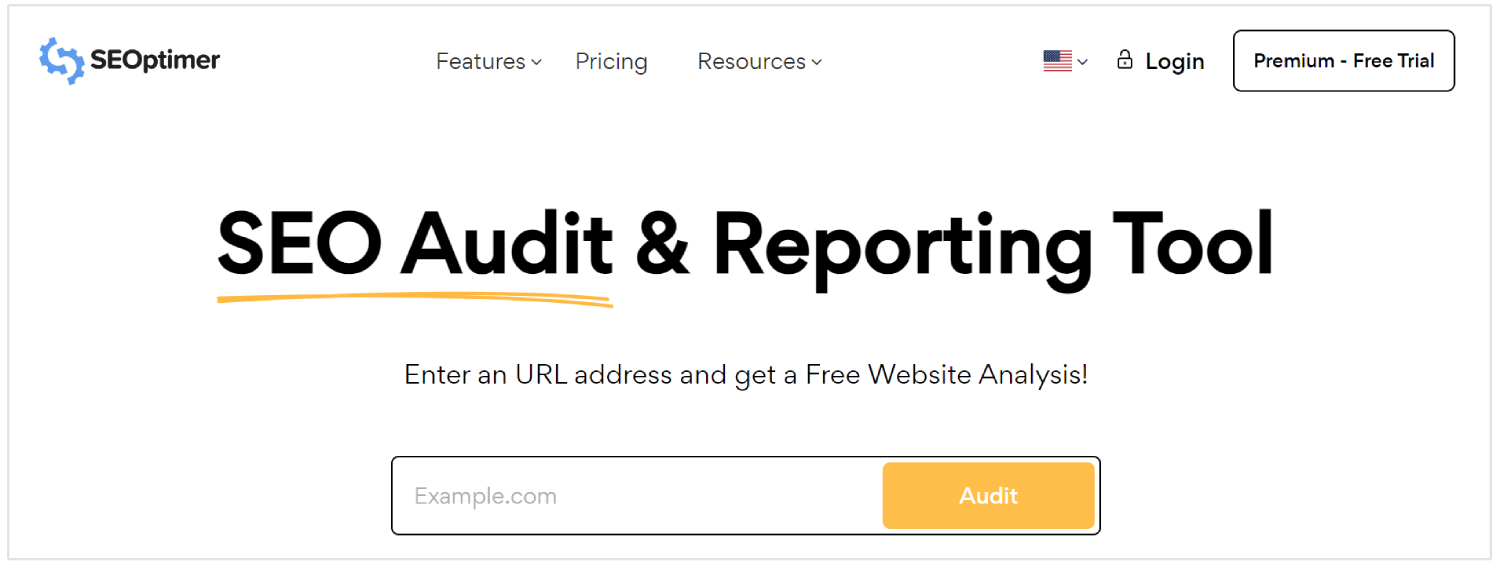
Once you've created an account, just add your domain to our Backlink Research tool, and SEOptimer will automatically start pulling your backlink data for you.
You'll be able to find your entire backlink profile almost immediately, and unlike the majority of other SEO tools, you won't need to wait for prehistoric data to import.
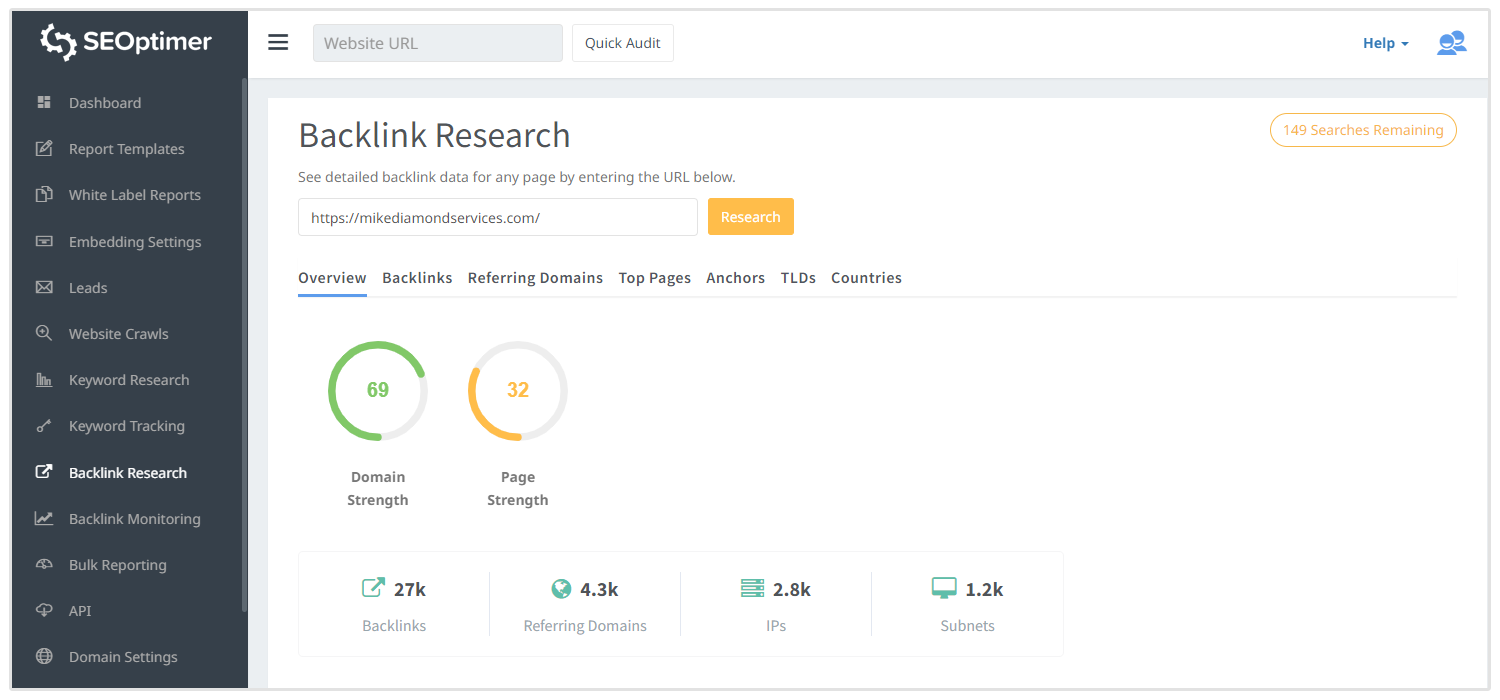
Step 2: Discover Your Backlink Profile
Now, simply head over to the Backlinks tab, and be greeted with your entire backlink profile:
This set of data contains every link currently pointing to your website, as well as valuable metrics about each one to help you assess its quality, authority and relevance.
These metrics include backlink metrics such as:
- Total Backlinks
- Nofollow Backlinks
- Dofollow Backlinks
- Domain Strength
- Page Strength
- Anchor Text
- Referring Page
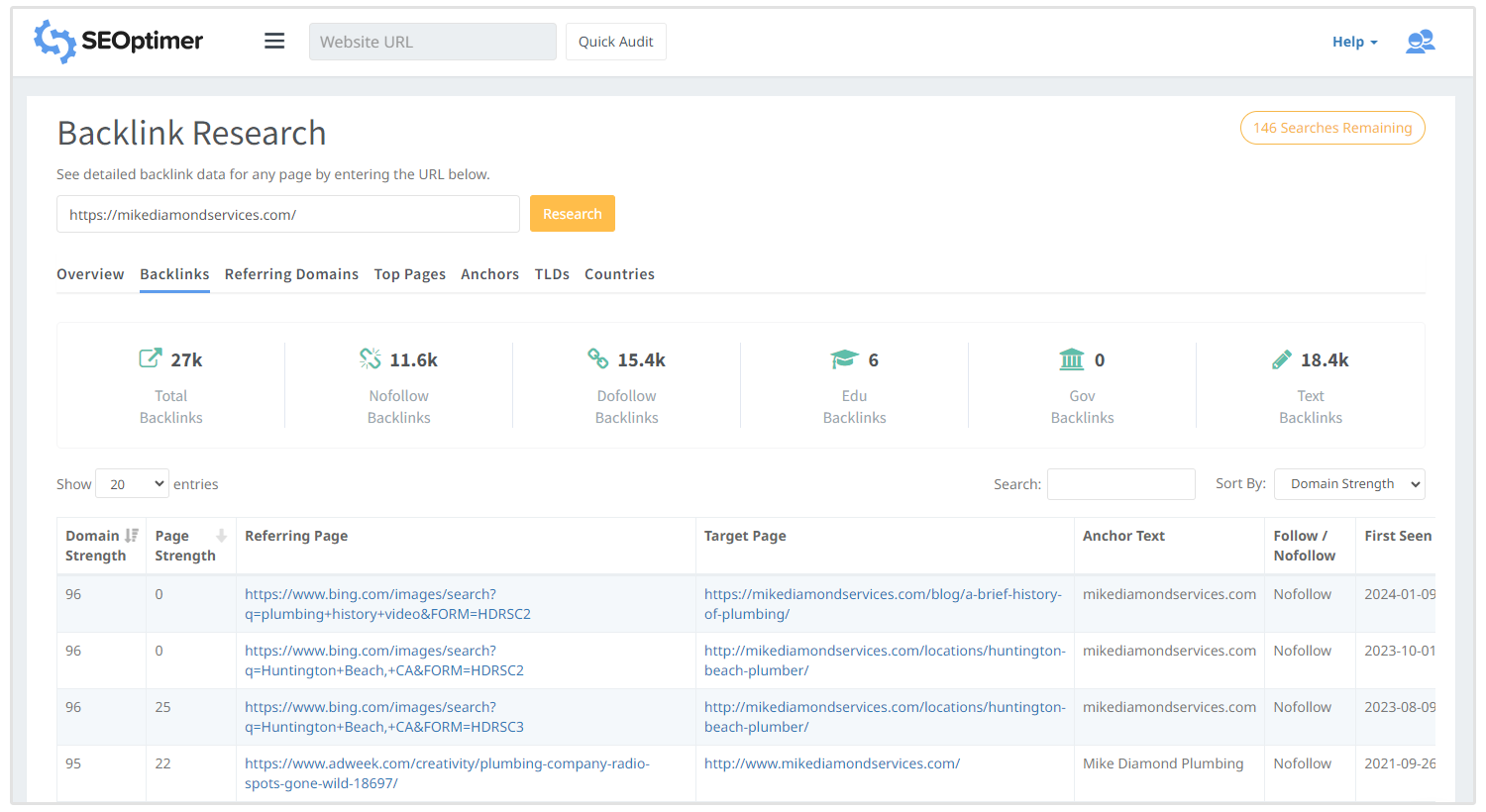
Step 3: Identify Who Links to Your Site
Now, it's time to answer the all-important question: Who links to my site?
Simply check out the "Referring Page" column in the Backlinks tab to find your answer. This details the domain that's given a backlink to your site
In this column, you'll see the URL of the linking domain. you'll see the anchor text used in the next column.
And that's it, you're done! You've found everyone who links to your site.
What to Do Next
In just five minutes, you now know exactly who's linking to your site.
But what happens next? What should you do with this information?
Having this information in front of you is extremely valuable to build your entire SEO plan, going forward. These are the important next steps:
1. Analyze Your Backlink Profile
Once you've located your backlink profile, it's wise to have a scan through for anything that could cause issues.
SEOptimer gives you a bunch of important metrics to analyze, so you can investigate the backlinks further:
Here's what to pay attention to:
Domain Strength
Another metric you'll want to track is the Domain Strength of the sites you're collecting backlinks from.
To do this, simply sort your backlink profile by the "Domain Strength" column:
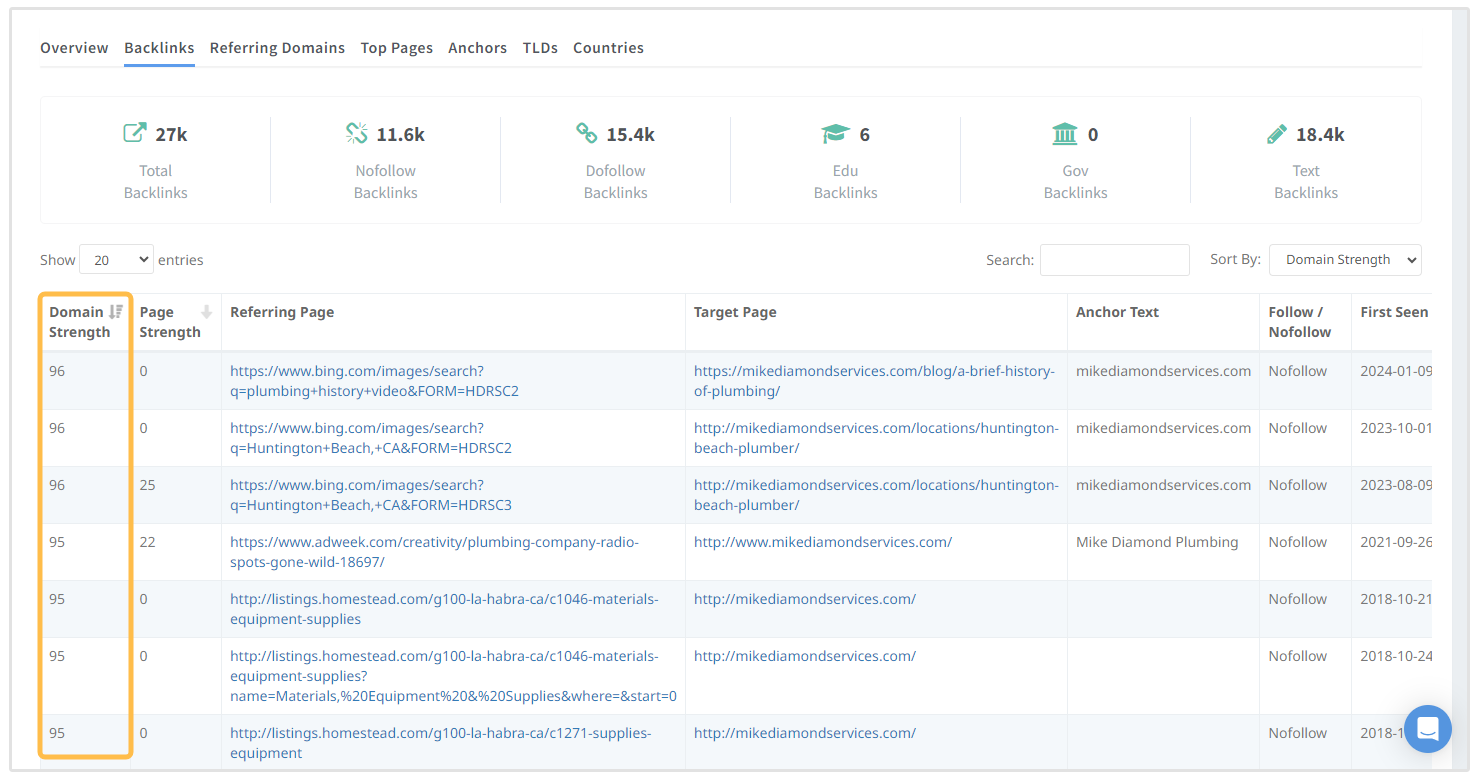
Scored on a scale of 0-100, this SEO metric predicts how likely a website is to rank in the SERPs. For reference, Huffington Post has a Domain Strength of 93, and Facebook's score is 100.
You'll want to aim for backlinks from sites with a Domain Strenght score of more than 40.
Find any that don't fit the bill by filtering for backlinks with a Domain Strength lower than 40. And add them to your warning list in a seperate Google Sheets or Excel file.
Page Strength
Finally, sort your backlink profile by the "Page Strength" column:
Also scored on a scale of 0-100, Page Strength is similar to Domain Strength—but predicts the likelihood of a single page ranking in the SERPs, rather than the entire domain.
Aim to fill the majority of your backlink profile entries with links from pages with a Page Strenth scores of 30 or higher.
That way, you're only collecting those juicy backlinks that are likely to have a positive effect on your ranking efforts.
2. Get Rid of Bad Backlinks
Okay, so you've got a bunch of low-quality links that you've added to a seperate document.
Now, it's time to disavow the links that don't fit our strict criteria.
Simply put, disavowing bad backlinks tells Google not to associate your site with the low-quality one. Not only will this help to prevent Google penalties and poor rankings, but it improves your online reputation.
To stop these links from dragging you down, you'll need to head back to your low-quality backlinks that you found in your analysis above and create a disavow file consisting of these links.
Whether you select disavow the entire domain or just the individual URL depends on the reasoning behind your choice to disavow.
Generally, if:
- The Domain Strength is the issue, disavow the domain.
- The Page Strength is the issue, disavow the URL.
Simple, right?
Then, all you have to do is head to submit the list to Google's Disavow Tool.
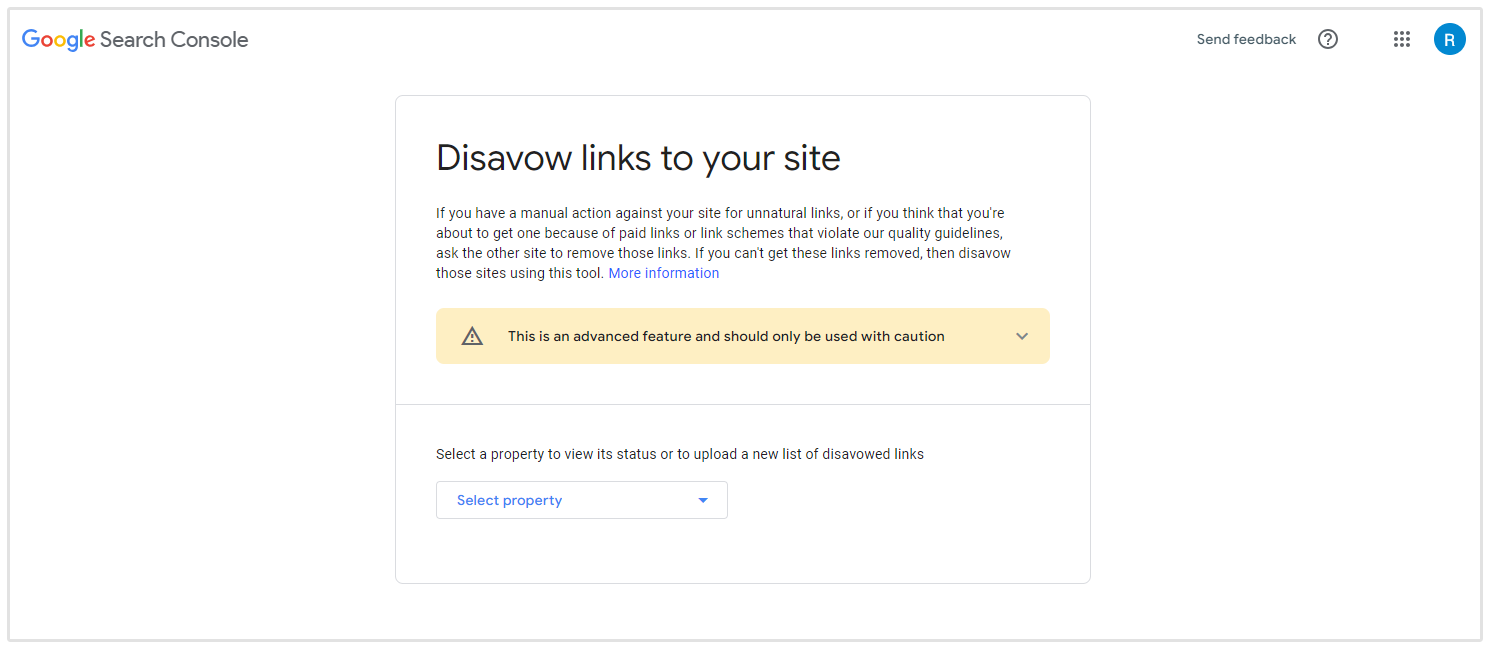
Wrapping Up
Congratulations! You've found out who links to your site, and analyzed each entry to take your SEO check a step further.
However, there's one important thing to remember:
People are always linking to your site, and some of those additions you're picking up might not be up to your high standards—especially if you've collected them organically.
For that reason, don't forget to analyze and purge your backlink profile every so often.
It's a quick task that's easy to put off, but it's one with the power to change your entire site's keyword ranking positions. Believe me!










